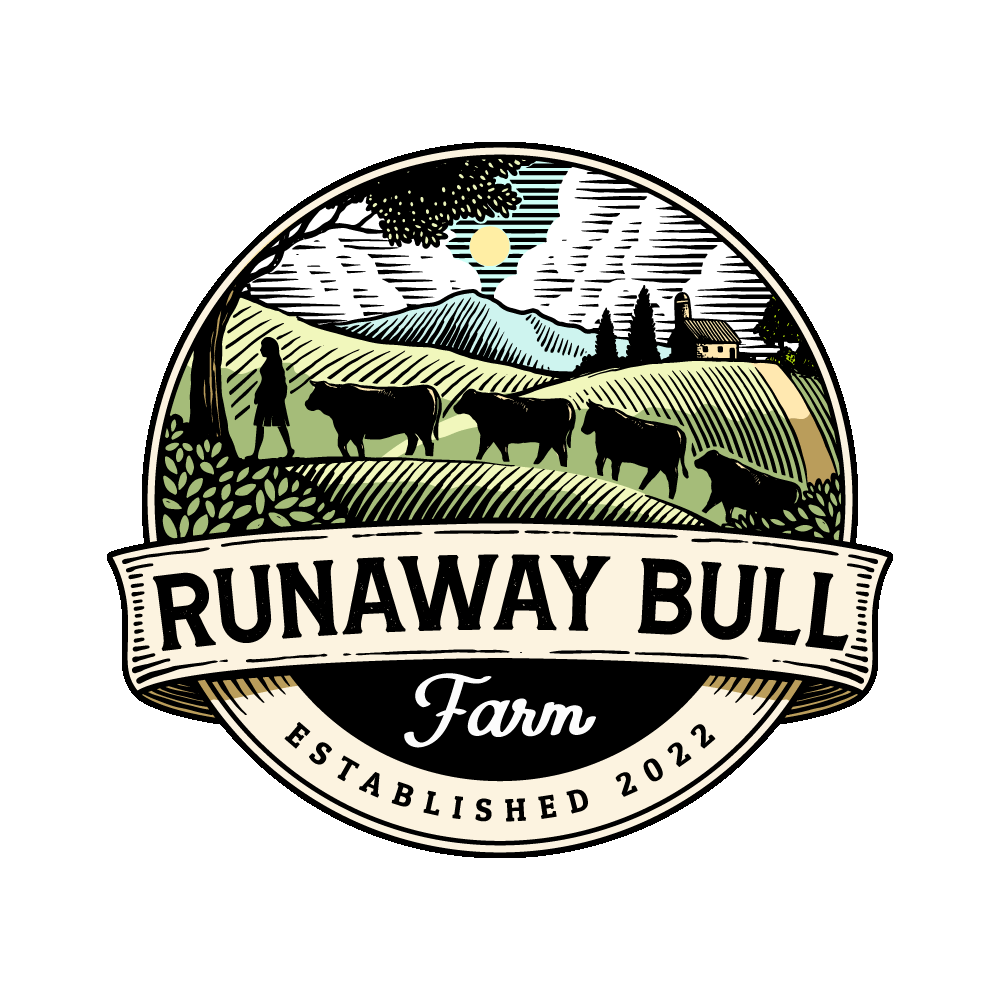Regenerative Farming

We invite you to tour our working farm and learn about our stewardship model of soil fertility, composting, animal husbandry on our picturesque farm located in Washington County, MD.
When you visit Runaway Bull Farm, you'll learn why we choose to produce crops in a regenerative, holistic system. Our farm tours look at biological principles behind organic farming and the importance of raising animals naturally & humanely.
Depending on the season and the weather, we will explore the pastured poultry and pigs, grass-fed cattle and goats, vegetable growing, crop fields, soil building, and beneficial insects. Together, we will journey through the fields and discover the many sights, sounds, and smells of Mother Nature at work.

How does Regenerative agriculture work?
-
Avoiding frequent plowing of soil and drilling seeds into the soil.
-
Use of cover crops help to control the carbon level in the soil.
-
Incorporating crop rotations.
-
Rotating crops with livestock grazing.
-
Sustaining from using toxic fertilizers and pesticides.
Principles of Regenerative farming
1. The minimum amount of soil disturbance
Regenerative farming focuses on building or rebuilding the soil without any disturbance. We try to minimize or eliminate tillage. Our planting methods, by hand, provides the least amount of mechanical disturbance possible. We strive to become a 100% no-till farm.
2. Protect the Soil
Cover the soil as much as possible after harvesting the main crop, preferably green growing cover to keep living roots in the soil. We keep the soil covered with various cover to eliminate erosion. It is important because you can’t build soil while it is harshly exposed to the elements.
3. Keep rotating the crops
Rotating crops in the field is especially important. We don’t let our fields empty for a longer period because the solid needs micro-organisms and it's the crops that feed the soil micro-organisms. We keep crops on rotation according to seasons and demand so that soil does not die.
4. Increase Biodiversity
Biodiversity is referred to as the variability in crops, livestock, and other agricultural features, including varieties, breeds, species, and genes. Biodiversity makes it possible for crop plants to resist pests and diseases. This is because different types of crops have different levels of resistance and susceptibility to pests and diseases.
5. Integration of Livestock
The last principle of regenerative farming practice is to move livestock around fields more frequently in smaller paddocks. It is known as rotational grazing. Grazing livestock adds diversity to the products produced on the farm and recycles nutrients through manure. It gives the soil and grasses more time to recover.



